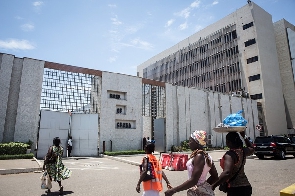Since April 2020, yields on government short-term treasuries have declined, following the regulatory measures taken by the Central Bank, as well as government fiscal policy to reduce interest rates priced-off the Ghana Reference Rate (GRR) by 200 basis points.
The regulatory measure as well as subsequent measures such as a reduction in universal banks capital adequacy ratio (inclusive of capital buiffe4r) from 13 percent to 11.5 percent, a lowering of their reserve requirements from 10 percent to eight percent and the suspension of the dividend payment made available large liquidity on the market.
Other non- bank financial intermediaries have also been given added space for lending through a loosening of regulatory restrictions by the BoG as well.
Although revenue shortfalls and extraordinary public expenditures brought about by the impact of the COVID 19 pandemic have dramatically increased government’s fiscal deficit and consequent debt financing needs it has made deliberate efforts, in conjunction with the BoG to avoid increasing its domestic debt treasury instruments issuance to avoid pushing interest rates up and crowding the private sector out of the credit market. Those efforts seem to be working well.
The yield on the 91-day treasury bills for last week was at 13.97 percent, declining from 14.03 percent as at the end of April 2020.
Further to this, currently, yields on the secondary market have remained stagnant since last June 2020 for the 2-year notes and 3-year bonds, whereas the yield of the 5-year bond has declined from 21.70 percent to 19.80 percent by the first week of July 2020.
Much earlier in the second quarter of 2020, the strong liquidity coupled with a decline in yields on the primary market caused a shift in investors’ interest for attractive deals across the various maturities on the secondary bond market. However, currently, there is a stagnation in the yields on the secondary market, which serves as the benchmark for the rates on the primary market.
Amid increasing inflation, market analysts are anticipating government would keep the yields on the primary market, especially for the 91-day treasury bills, at the current level in order avoid further declines in the real returns on the treasury bills to investors.
Market watchers have maintained that at the moment, in spite of the increased liquidity, banks are cautious in their on-lending to the real economy, due to the high credit risk amid the current pandemic.
In alleviating the potential liquidity strains, the BoG slashed its benchmark Monetary Policy Rate by 150 basis points on March 18 to combat the economic impact of coronavirus pandemic, as well as a reduction in banks’ reserve requirements.
The government also agreed with the Ghana Association of Bankers that banks should cut the interest rates on all their ongoing and new loans by 200 basis points to enable borrowers to cope with the financial strains COVID 19’s impact has placed on them.
However, this raised fears that lower interest margins on loans to customers would divert banks' monies even further towards government debt securities.
However, the government has been able to curtail this by lowering the rates it offers on its debt securities thus enabling interest margins on customer loans to continue generating a requisite risk premium for the banks.













